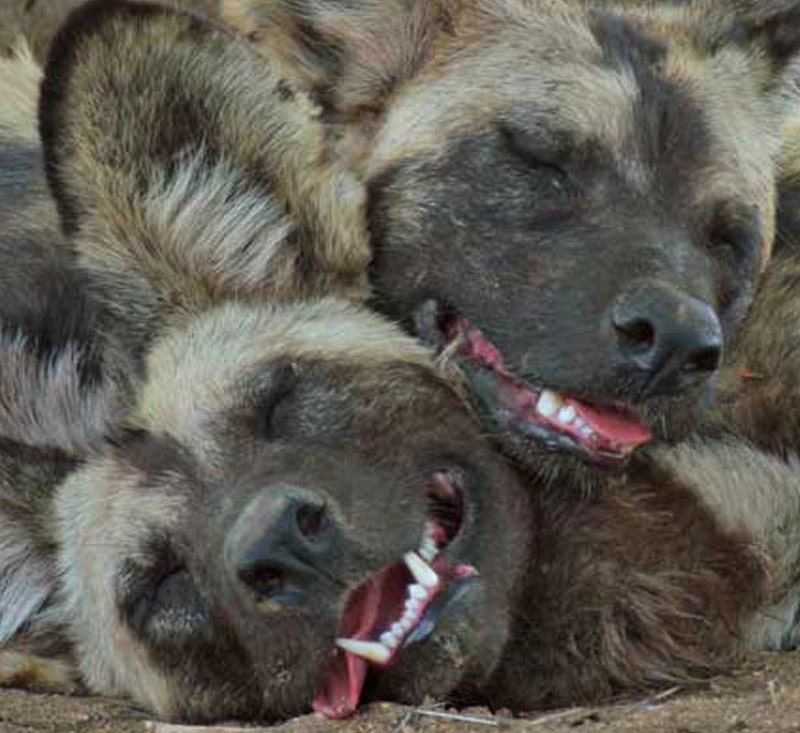
Zimbabwe is a special place. Due to its residents’ resilience to “make plans” in the face of seemingly endless political turmoil and hardships, MTT has developed a huge respect for it. Zimbabweans are creative and courageous, out of necessity. They take care of each other and their wildlife, out of necessity. Zimbabwe’s tourism industry is competent and well organized. Visitor numbers are strong. Do not be afraid of visiting Zimbabwe.
The primary safari route of old within Zimbabwe is Victoria Falls, Hwange National Park, Bulawayo, Matabo Hills National Park, and Harare. Victoria Falls town has an international airport from where daily scheduled flights connect it to Bulawayo and Harare.
Victoria Falls competes with Livingstone, Zambia as the place to view Victoria Falls. No matter on which side you decide to stay, it is a simple matter to cross to the neighboring country and walk the entire length of the falls. Transit visas are available at the border crossing on the bridge between Zambia and Zimbabwe. You should see the Zimbabwean side of the falls during the height of the dry season – between July and November – as this has the most water flow. It’s a tough call, but MTT recommends Victoria Falls town over Livingstone town if you can only visit one side of the falls. We prefer its accommodation, restaurants, and shopping.
Hwange National Park is a two-hour drive from Victoria Falls town. It is possible to visit year-round although due to its location on the eastern border of the Kalahari sands, Hwange gets bitterly cold during the southern hemisphere winter months of July and August. Game viewing revolves around Hwange’s many water holes which are maintained by electric pumps for huge herds of thirsty elephants and other game by kind-hearted Zimbabwean charities. If you choose accommodation off the Victoria Falls road, along the park’s eastern border, then it is a long drive just to the park gates. Staying inside the park costs more but you save long hours in a game vehicle.
Bulawayo is Zimbabwe’s second largest city after Harare. Less than an hour’s drive south of Bulawayo is the ancient and inspiring rock landscape of the Matobo Hills. The best place in the hills to enjoy the scenery is Cecil Rhode’s grave, the wealthy colonialist who defeated the local Ndebele for their land and whose lofty ambition, ultimately unsuccessful, was to claim all of Africa for Britain. There are some wonderful accommodations tucked away in Matobo’s rock faces which are convenient bases for visits to Matobo Hills National Park and its series of cave rock paintings.
Harare is well worth a few days’ visit. There is a good range of accommodations; some pleasant tea gardens and small restaurants; local farmers’ markets; and excellent Shona sculpture and art galleries. Once or twice yearly, the Verandah Gallery holds an art exhibition and sale of local artists which benefits the Emerald Hill Children’s School. If you are in Harare the last weekend of July, or the first weekend of September, then this well-known local event is worth putting on your schedule.
MTT’s favorite Harare destination, favorite wildlife sanctuary in fact, is Wild is Life. Entry is by appointment only. Don’t miss it!
MTT’s Special 8 Day Wild Dog Denning Safari includes these three destinations. It begins with a day visit to Great Zimbabwe, a Zimbabwe National Monument and UNESCO World Heritage site, a three-hour drive south of Harare. Dating from the 11th century, the ruined city is thought to have been the capital of the Kingdom of Zimbabwe during the country’s Late Iron Age. The exact identity of the Great Zimbabwe builders remains unknown.
The Savé Valley was comprised of cattle farms in the 1920s. Cattle rearing pushed out the wildlife. Twenty-four of these defunct cattle ranches later joined together to form the Savé Valley Conservancy, a 3200-square km area, into which wildlife was re-introduced. Currently, Savé is home to all member species of the Big Five.
The Savé Valley also supports one of Africa’s most important African wild dog populations. A visit here can offer unparalleled viewing opportunities. We stay as the only guests of a private camp in the conservancy which has hosted the African Wildlife Conservation Fund (AWCF) and their Lowveld Wild Dog Project since 2008. Our visit is timed to coincide with wild dog denning season which falls June through August.
After 3 nights at Savé, we drive through the conservancy to Gonarezhou National Park where the magnificent red sandstone Chilojo Cliffs are a famous natural feature. Gonarezhou is part of the Great Limpopo Transfrontier Peace Park with links to South Africa’s Kruger National Park and Mozambique’s Limpopo National Park, the intent of which is to allow the free movement of wildlife. Gonarezhou means the “The Place of Elephants” in Shona. As its name implies, it is well known for its elephants with an estimated population of 8,000. Gonarezhou is also known for its wild dog populations. Our accommodation for three nights is Chilo Gorge Safari Lodge, whose founder, Clive Stockil, is the 2013 winner of the Prince William Award for Conservation.
Mana Pools National Park lies on the opposite bank of the Zambezi River to Zambia, occupying over 2000 square kms of wilderness river front. Access is limited during the rainy season of December to April. Most visitors fly in on a chartered aircraft from Kariba or self-drive from Harare. Accommodation consists of a few safari lodges, mobile tented camps, private campsites and self-catering national parks chalets. Mana is known for its walking safaris led by top notch private safari guides and for canoeing the Zambezi. Game-rich Mana is a park that no safari aficionado should miss.
Matusadona is located on the southern shores of Lake Kariba, Zimbabwe’s lake resort for fishermen and houseboat rentals. Lake Kariba was formed by damming the Zambezi River beginning in 1954. The easiest way to access the Matusadona wilderness is by boat from Kariba town, but it is also possible to drive there using a 4 x 4. There are a few luxury safari camps and several budget accommodations. Zambezi escarpment scenery is superb.
In Eastern Zimbabwe near Mozambique lies Nyanga National Park and the Bvumba Mountains, both popular peaceful weekend retreats for Harare residents, especially during the hot months. La Rochelle is the former private estate of Sir Stephen Courtauld and his wife Lady Virginia, some of the wealthiest people in southern Africa during their tenure, from 1951 to 1970. They also owned Eltham Palace in London. La Rochelle isn’t as old as Shiwa N’gandu in northern Zambia, but it has the same flavor and like Shiwa, is well worth a visit. The interesting part of the story is that the Courtaulds supported black rule for Rhodesia. Upon her death, Lady Virginia willed the property to the people of Southern Rhodesia.
MTT’s Director lived in Harare for two years during which time she traveled extensively and learned about Zimbabwe intimately. This is also when she developed her respect for Zimbabwe’s travails and the Zimbabwean spirit in dealing with them. There are the same practical reasons for choosing MTT Zimbabwe as all other MTT destinations.
MTT works freely with a diverse collection of accommodation owners and associates, which best serves each client’s unique needs. MTT is a small company, the advantage of which is quick decision-making ability, room for lots of flexibility, and personalized service. Broad experience and knowledge of more than one African country makes MTT a qualified consultant for anyone seeking to combine Zimbabwe with other countries, Zambia and Botswana for example.
Harare, Victoria Falls and Bulawayo offer some of the most comfortable, affordable, and best operated guest houses in Africa. It is why MTT recommends staying in Victoria Falls over Livingstone, Zambia. Lodges and safari camps are also of very high standard, excellent value, and intimately sized.
The final cost of a safari depends upon many factors: length of the safari; accommodation choice; seasonal rates for accommodation; safari vehicle rental; fuel; driver and guide expenses; local flights; airport transfers; and park, community and activity fees.
Operators which offer set departures and itineraries which don’t alter greatly throughout the year can provide safaris already priced on their websites. MTT’s specialty is bespoke safari services. Each itinerary is personal and its cost varies. However, the guideline for a good value, mid-range safari in Zimbabwe is anywhere from 475 – 800 USD per person per day.
MTT LTD accepts Visa and MC credit cards, debit cards, and PayPal through its online invoicing and payment system operated by 3G Direct Pay.
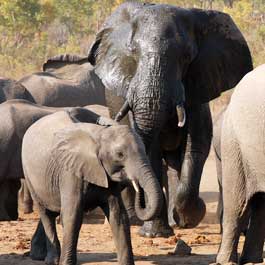
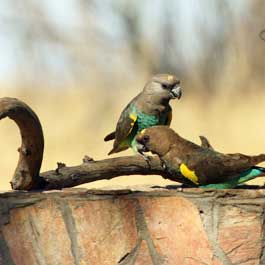
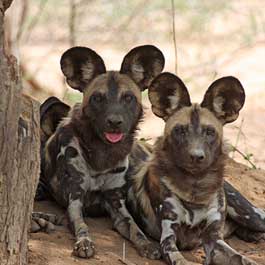
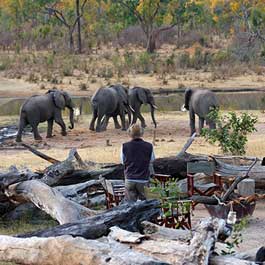
MT Cheza is our guest house on the company’s five-acre wooded plot in a quiet, rural area of Lusaka. A 35-minute drive from the airport, MT Cheza offers two comfortably furnished, private, one and two bedroom cottages with fully equipped kitchens. If you seek the peace of country living in the city, then Cheza is for you.
Cheza is most suitable for individuals, couples, friends, and families who want to spend a few nights in Lusaka pre-or-post their African safari.